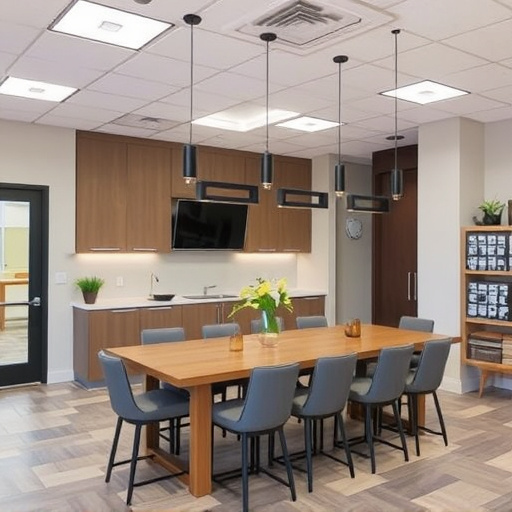In the digital age, scalable web design is essential for adaptability across devices. It involves dynamic content placement, adjustable fonts, and responsive images to enhance user experience without sacrificing performance. This approach improves accessibility for assistive technologies and boosts SEO rankings, drawing more traffic. Achieving multi-device accessibility through responsive design and local SEO techniques is key, ensuring visibility and satisfaction for users on various platforms. Testing across devices guarantees a visually appealing, functional design that caters to diverse technology preferences.
In today’s digital landscape, ensuring a seamless user experience across various devices is paramount. This article explores the concept of scalable web design, a key strategy to achieve multi-device accessibility. We delve into understanding the fundamental essentials of scalable design and provide a comprehensive guide to implementing best practices. By examining multi-device accessibility from every angle, this resource equips developers with the tools to create adaptable websites that cater to all users, regardless of their device choice.
- Understanding Scalable Design Essentials
- Multi-Device Accessibility: A Comprehensive Approach
- Best Practices for Implementation and Testing
Understanding Scalable Design Essentials

In the realm of modern web development, scalable web design is no longer an option but a necessity. It involves creating websites that adapt seamlessly to various devices and screen sizes, ensuring an optimal user experience regardless of whether accessed on a desktop computer, tablet, or smartphone. This approach isn’t just about responsiveness; it’s about flexibility, efficiency, and future-proofing your online presence. By adopting scalable design principles, developers can create layouts that dynamically adjust content placement, font sizes, and image dimensions to fit different viewing contexts without compromising usability or performance.
A key component of scalable web design is prioritizing content accessibility. This means ensuring that the website’s structure, styling, and functionality work in harmony with assistive technologies used by individuals with disabilities. A well-designed scalable website not only accommodates these users but also benefits everyone by improving overall navigation and usability. Furthermore, focusing on scalable design can significantly impact search engine optimization (SEO), particularly when combined with effective keyword research services and local search optimization strategies. This can lead to increased website traffic as search engines prioritize mobile-friendly, content-rich sites in search results.
Multi-Device Accessibility: A Comprehensive Approach

In today’s digital landscape, multi-device accessibility is no longer an option but a necessity for scalable web design. Websites must be crafted with a comprehensive approach that caters to users on desktops, tablets, and smartphones alike. This means ensuring responsive design principles are implemented to provide an optimal viewing experience regardless of screen size or orientation. A well-designed website should seamlessly transition between different devices without sacrificing functionality or content quality, thereby enhancing user satisfaction and engagement.
A key component of this strategy involves leveraging local SEO Fort Lauderdale techniques to improve visibility for users in specific geographic areas. By optimizing web content with relevant keywords and location-based metadata, businesses can attract nearby customers who are actively searching for their products or services on mobile devices. Additionally, integrating local citation services ensures consistent business listings across various online platforms, further increasing website traffic from localized search queries.
Best Practices for Implementation and Testing

Implementing a scalable web design that accommodates multi-device accessibility involves adhering to best practices from the outset. A SEO company Plano should first ensure that the website is structured with a responsive web design approach, where content and layout adapt seamlessly across various screen sizes and resolutions. This foundation ensures your site appears consistent and functions well on desktops, tablets, and smartphones alike.
Testing is paramount in this process to guarantee optimal performance. Conduct thorough checks on different devices and browsers to verify the responsiveness of the design, the legibility of text, and the functionality of all interactive elements. Utilize emulators and real devices for testing to simulate diverse user environments, ensuring your web design South Florida remains accessible and visually appealing regardless of the user’s technology preferences.
Scalable web design, which adapts seamlessly across various devices, is no longer a luxury but an essential for delivering exceptional user experiences. By embracing multi-device accessibility and implementing best practices, developers can create dynamic and inclusive online environments. This approach ensures that websites remain functional, visually appealing, and accessible on desktops, tablets, and smartphones, ultimately enhancing user engagement and satisfaction.














